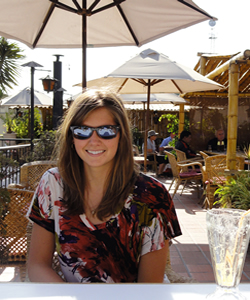As my time in Lima draws to a close, the preparations for the festival of Señor de los Milagros are gearing up. Peruvian friends and cab drivers alike have chastised me for my poor planning: how could I go to Chile in the most exciting week of the year in Peru? If only I had known, but alas, I will miss Lima awash in bright purple as thousands flood the streets.
The existence of the “Señor de los Milagros” (Man of Miracles) is one example of a fascinating religious phenomenon in this country. Indigenous culture, beliefs, and practices were so deeply ingrained in this part of the world that when the Spanish arrived in the middle of the sixteenth century they made the unusual decision (when it comes to colonialism) to allow some of these traditions to survive. Rather than wiping out the existing indigenous population along with their language and culture as occurred elsewhere in the region, Peru retained it.
Pachacamac was one of the most important pre-Incan deities on the central Pacific coast of South America for hundreds of years. I had a firsthand experience here in Lima a few weeks ago that made it clear to me why the god of the earth has such importance here. I woke up around 3 a.m. to my bed shaking violently; my first earthquake ever (I am from Ohio, not California) lasted about five minutes, and yet I heard nothing about it the next day until I asked someone. “Terremotos” or earthquakes are extremely common in Peru and the fear they caused in the people who lived here hundreds of years ago brought about the belief in a god who had the power to shake the surface of the earth.
When the Spaniards brought Catholicism to a group so deeply committed to their faith in this god, they told the indigenous people that they were right, – such a god did exist, and they call him “Señor de los Milagros” and represent him with the image of Christ on the cross.
A similar mixing of Catholicism and ancient religious tradition can be found in a depiction of the Last Supper hanging in the cathedral in Cusco where the disciples can be seen eating a platter of “cuy” (guinea pig), which is a traditional dish here with roots in the country’'s pre-colonial history. Cuy, I hate to admit, is another part of this story with which I have firsthand experience.
When I leave Peru in a few days, I will only be leaving with questions. For me, Peruvian religion and culture have turned out to be a lot like the layers everyone keeps reminding me to wear at high altitudes. There is a lot of ambivalence in this country: about the merits of the old dictator, about whether chifa is Chinese or Peruvian food, and about the way Catholicism fits into a quickly modernizing country. One has to look closely at the layers added by each generation, even before the Incas and the Spaniards, in order to see why the procession of the Señor de los Milagros holds such deep meaning in Lima to this day.

